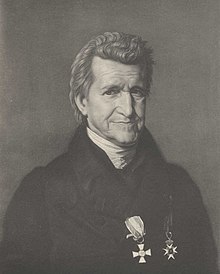
Justus Freiherr (Baron) von Liebig was a German scientist who made major contributions to the theory, practice, and pedagogy of chemistry, as well as to agricultural and biological chemistry; he is considered one of the principal founders of organic chemistry. As a professor at the University of Giessen, he devised the modern laboratory-oriented teaching method, and for such innovations, he is regarded as one of the greatest chemistry teachers of all time. He has been described as the "father of the fertilizer industry" for his emphasis on nitrogen and minerals as essential plant nutrients, and his popularization of the law of the minimum, which states that plant growth is limited by the scarcest nutrient resource, rather than the total amount of resources available. He also developed a manufacturing process for beef extracts, and with his consent a company, called Liebig Extract of Meat Company, was founded to exploit the concept; it later introduced the Oxo brand beef bouillon cube. He popularized an earlier invention for condensing vapors, which came to be known as the Liebig condenser.
The Liebig condenser or straight condenser is a piece of laboratory equipment, specifically a condenser consisting of a straight glass tube surrounded by a water jacket.
Friedrich Heinrich, Freiherr von Kittlitz was a Prussian artist, naval officer, explorer and naturalist. He was a descendant of a family of old Prussian nobility. He collected specimens and made illustrations on major expeditions and wrote a few books on his travels. Several species were described on the basis of specimens collected by him and a few are named after him including Kittlitz's plover.

Johann Christian Daniel von Schreber, often styled J.C.D. von Schreber, was a German naturalist.

Nikolaus Joseph Freiherr von Jacquin was a scientist who studied medicine, chemistry and botany.
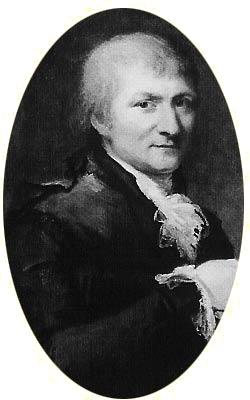
Adam Afzelius was a Swedish botanist and an apostle of Carl Linnaeus. Afzelius was born at Larv in Västergötland in 1750. He was appointed teacher of oriental languages at Uppsala University in 1777, and in 1785 demonstrator of botany. In 1793 he was elected a member of the Royal Swedish Academy of Sciences. In 1800, Adam Afzelius became member of the German Academy of Sciences Leopoldina.

Diederich Franz Leonhard von Schlechtendal was a German botanist. The standard author abbreviation Schltdl. is used to indicate this person as the author when citing a botanical name.
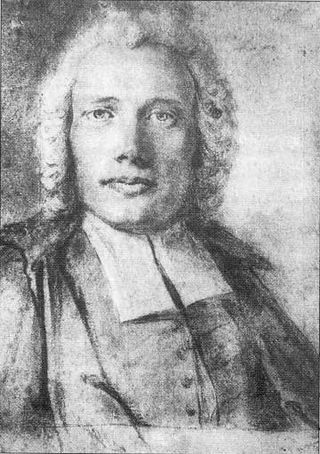
Pehr Osbeck was a Swedish explorer, naturalist and an apostle of Carl Linnaeus. He was born in the parish of Hålanda on Västergötland and studied at Uppsala with Carolus Linnaeus.
Christian Friedrich Ecklon was a Danish botanical collector and apothecary. Ecklon is especially known for being an avid collector and researcher of plants in South Africa.
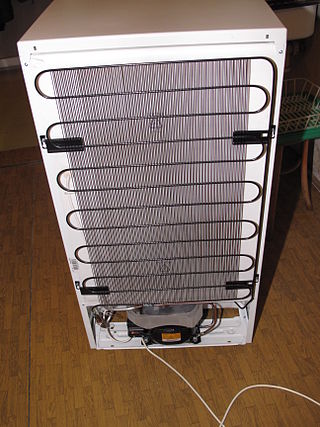
In systems involving heat transfer, a condenser is a heat exchanger used to condense a gaseous substance into a liquid state through cooling. In doing so, the latent heat is released by the substance and transferred to the surrounding environment. Condensers are used for efficient heat rejection in many industrial systems. Condensers can be made according to numerous designs and come in many sizes ranging from rather small (hand-held) to very large. For example, a refrigerator uses a condenser to get rid of heat extracted from the interior of the unit to the outside air.

Paul Dietrich Giseke was a German botanist, physician, teacher and librarian.

Christian Friedrich Hornschuch was a German botanist.

David Heinrich Hoppe was a German pharmacist, botanist, entomologist and physician. He is remembered for contributions made to the study of alpine flora.

Wilhelm Daniel Joseph Koch was a German physician and botanist from Kusel, which at various points in his life was under the Holy Roman Empire, part of France and then part of the Kingdom of Bavaria.
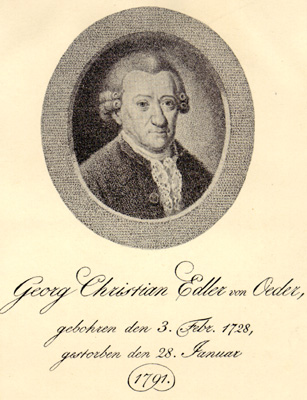
Georg Christian Edler von Oldenburg Oeder was a German-Danish botanist, medical doctor, economist and social reformer. His name is particularly associated with the initiation of the plate work Flora Danica.
Johann Christian Gottlob Baumgarten was a German physician and botanist who was a native of Luckau in Lower Lusatia.

Theodor Friedrich Marsson was a German pharmacist and botanist. Marsson was born in Wolgast, Prussian Pomerania, just a year after the Swedish Empire had de-occupied the city, which had been under Swedish control since the Thirty Years' War. He was father-in-law to physiologist Leonard Landois (1837–1902).
Mantissa Plantarum Altera is an illustrated book with botanical descriptions which was edited by the Swedish naturalist Carl Linnaeus in the year 1771.
Johann Ehrenfried Pohl was a German physician and botanist. He was the son of physician Johann Christoph Pohl (1706–1780).
Ehrenfried is a male given name. The name may refer to:
